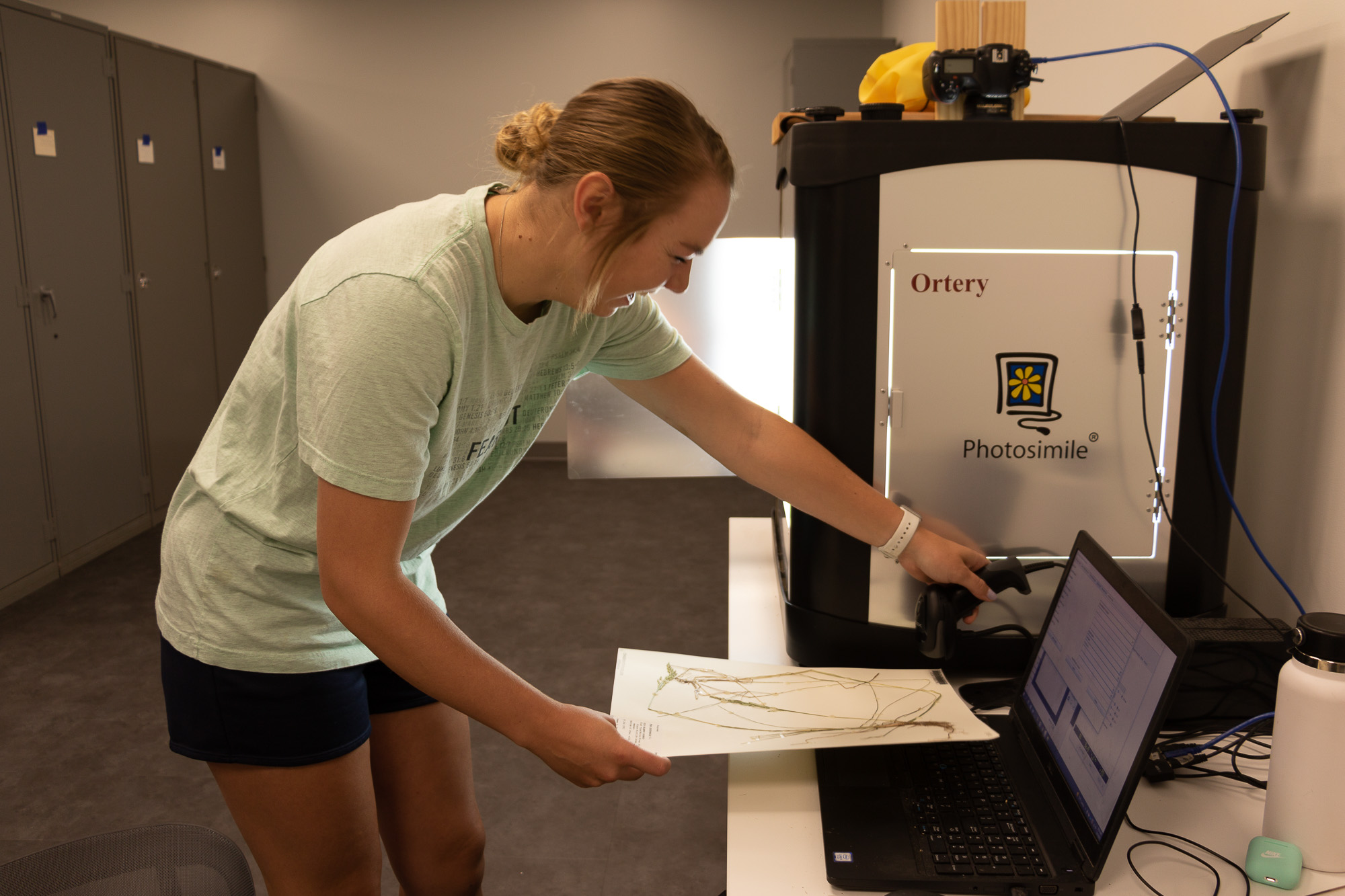High Plains Herbarium’s digital footprint reaches 52,000 entries

CHADRON – Chadron State College’s High Plains Herbarium digital collection is the largest of any Nebraska herbarium, according to Herbarium Director Steve Rolfsmeier. Data for more than 52,000 specimens are searchable online and more than half of the entries have images associated with them, according to Rolfsmeier. This is about 80 percent of the college’s flowering plants, ferns and conifer specimens.
CSC is part of the Consortium of Northern Great Plains Herbaria portal, a member of a larger group of Symbiota portals that can be searched for data and images of specimens from hundreds of U.S. herbaria. The imaging station, purchased through a 2018 National Science Foundation (NSF) grant, has been installed and is operating in the Math Science Center of Innovative Learning (COIL) Herbarium. Bailey Steinke, a senior from Denver is the imaging technician for the project. The original NSF grant will end this fall, but the college has committed to employing student workers to continue imaging and georeferencing.
“We have probably 10,000 specimens to go, but we continue to add specimens to the herbarium so digitizing will never really be complete,” Rolfsmeier said.
CSC’s bryophyte data, mosses and liverworts, are on the Consortium of North American Bryophyte Herbaria and Rolfsmeier has started digitizing the college’s lichen collection data on the Consortium of North American Lichen Herbaria.
Before the NSF project, the Herbarium staff had been adding an average of 1,000 specimens annually from Rolfsmeier’s collections, student collections, and gifts from other botanists and herbaria. In addition, they have a large backlog of 20 years of material collected by the founder of the Herbarium and Rolfsmeier’s predecessor Dr. Ron Weedon and others.
“This effort has increased the herbarium’s visibility tremendously. I’ve received a lot more requests for specimen images and leaf material, for DNA sequencing, than previously. We have the largest digital footprint by far of any Nebraska herbarium. It feels great to finally see Ron [Weedon’s] dream becoming reality,” Rolfsmeier said.
Category: Campus News, Employee Awards & Achievements, Physical and Life Sciences
